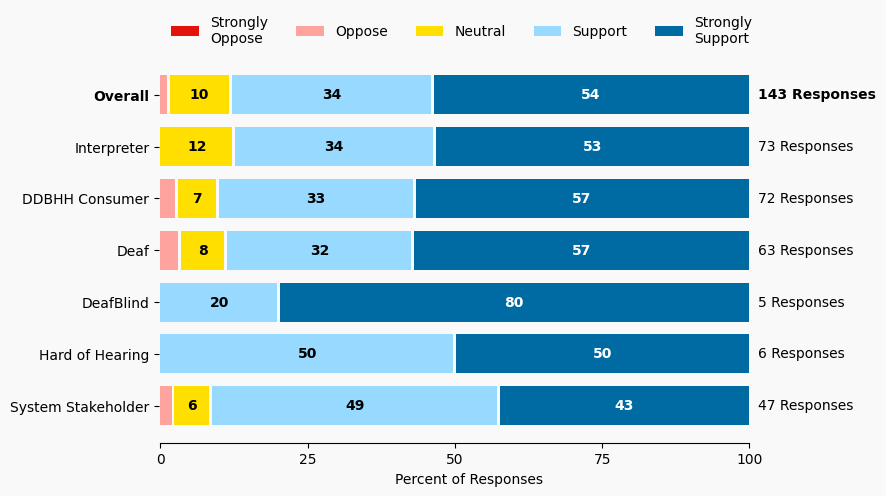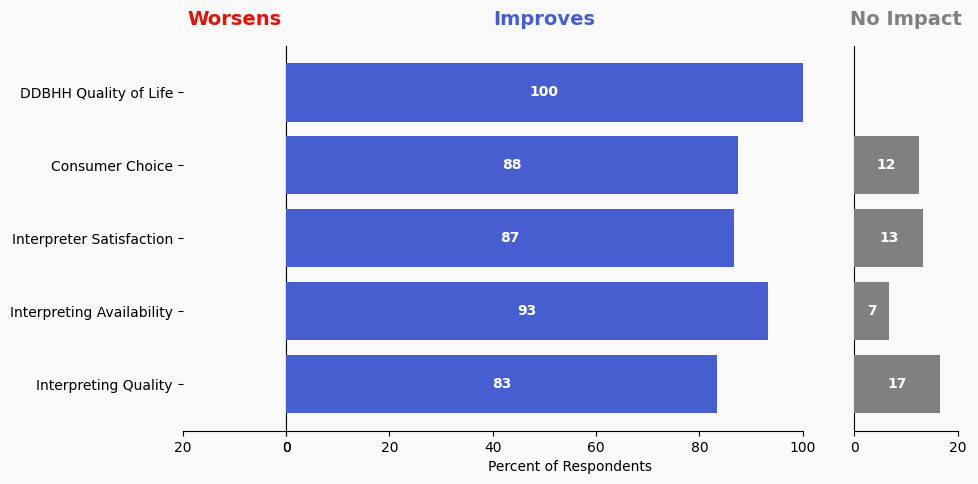1 Educate Potential Hiring Entities & Employers: Promote The Employer Reasonable Accommodation Fund
Issue: Business owners and consumers do not know about the 2-year pilot program called the Employer Reasonable Accommodation Fund (ERAF). This fund can reduce the expense of providing accommodations for employees.
Proposed Solution: Commission provide a public awareness campaign about the Employer Reasonable Accommodation Fund (ERAF) that focuses on DDBHH people and small businesses. DDBHH persons will gain more access because businesses will more easily be able to afford interpreters; interpreters will be paid better and more regular wages from small businesses. Businesses will be able to provide more access and have less ficial burden as their expenses are able to be reimbursed by the small business Reasonable Accommodation Fund.
Expected outcome: Consumers will gain more access to small business’s services. Interpreters will be paid more from small businesses.
Who is impacted: Hiring entities, consumers, working interpreters.
Update 9/10/24: The Commission has publicly shared information about the ERAF on August 2, 2024.
Timeline: 6 months
Note: DDBHH business owners can use this fund for their own access too!

Summary of Support Image Description
The stacked bar charts show how respondents rated their level of support and the total number of responses. The percentage for the five support levels is shown from left to right: Strongly Oppose (Dark Red), Oppose (Light Red), Neutral (Yellow), Support (Light Blue), and Strongly Support (Dark Blue).
Respondents may identify with multiple subgroups. The overall level of support is:
Overall
Strongly Oppose: 0%
Oppose: 1%
Neutral: 10%
Support: 34%
Strongly Support: 54%
Click to see the detailed image description for each subgroup.
Interpreter
Strongly Oppose: 0%
Oppose: 0%
Neutral: 12%
Support: 34%
Strongly Support: 53%
Deaf
Strongly Oppose: 0%
Oppose: 3%
Neutral: 8%
Support: 32%
Strongly Support: 56%
DDBHH Consumer
Strongly Oppose: 0%
Oppose: 3%
Neutral: 7%
Support: 33%
Strongly Support: 56%
DeafBlind
Strongly Oppose: 0%
Oppose: 0%
Neutral: 0%
Support: 20%
Strongly Support: 80%
System Stakeholder
Strongly Oppose: 0%
Oppose: 2%
Neutral: 6%
Support: 49%
Strongly Support: 43%
Hard of Hearing
Strongly Oppose: 0%
Oppose: 0%
Neutral: 0%
Support: 50%
Strongly Support: 50%
Overview of Respondents Opting for In-Depth Solution Analysis
After indicating their support level, 9% of the 143 respondents opted in to further assess whether the solution would worsen or improve on five metrics. Of the opt-in reviewers (14 respondents), 100% supported the solution, 0% were neutral on the solution, and 0% opposed the solution.
The remaining 129 respondents did not opt in to further assess the solution. Of these people, 86% support the solution, 11% were neutral on the solution, and 1% opposed the solution.
Reviewer Evaluation of Solution Effectiveness

Solution Effectiveness Image Description
The stacked bar charts show how respondents assessed the effectiveness of this solution based on five metrics. For each metric, the percentage of respondents is shown from left to right: Worsens (Red), Improves (Blue), No Impact (Gray).
DDBHH Quality of Life
Makes It Worse 0%
Makes It Better 100%
No Impact 0%
Interpreter Satisfaction
Makes It Worse 0%
Makes It Better 86%
No Impact 13%
Consumer Choice
Makes It Worse 0%
Makes It Better 87%
No Impact 12%
Interpreting Availability
Makes It Worse 0%
Makes It Better 93%
No Impact 6%
Interpreting Quality
Makes It Worse 0%
Makes It Better 83%
No Impact 16%
Reviewer Feedback and Insights
Interpreter
Comments from Interpreters agreed that centralized funding is seen as a critical solution for overcoming business resistance to the ongoing costs of providing services like interpreting and captioning which may result in greater employment opportunities for DDBHH people and interpreters, but does not directly address interpreter quality.
Deaf, DeafBlind, Hard of Hearing
Comments from respondents identifying as DDBHH consumers viewed this solution as an effective way to improve interpreter availability, and noted the need for DDBHH communities to provide education about the ERAF to their employers, instead of solely relying on MNCDHH to provide education and awareness.
System Stakeholder
Comments from System stakeholders suggested opportunities for collaboration that can increase visibility and sustainability of the ERAF via partnerships with Small Business Administration and with business conferences. Comments also indicated that development of strong community partnerships and policy advocacy by DDBHH organizations are crucial in advocating for policies that maintain long-term funding and support for the ERAF throughout changes in government leadership.
PREVIOUS SOLUTION
114 Develop More Communities of Practice as Professional Supports for Interpreters
Issue: Interpreters need more opportunities to develop skills and a support network.
NEXT SOLUTION
2 Commission Host Self-Advocacy Training via Train-the-Trainer
Issue: Not all consumers are confident and comfortable with advocating for interpreting access.
Leave a Reply